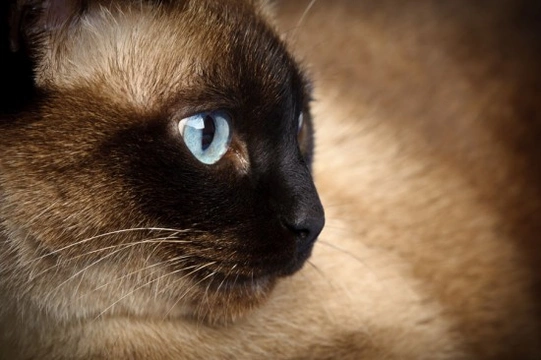
Progressive Retinal Atrophy (PRA) in Cats
There has been a resurgence of the degenerative eye disease, Progressive Retinal Atrophy in recent years, having been fairly dormant for the past twenty years or so when it was known simply as Retinal Atrophy before the full progressive nature was realised. It seems to affect only certain breeds of cats at present, although as new breeds are constantly emerging from cross breeding, that is not to say that it will not affect other breeds in future, especially as it has been shown to be an inherited condition. The breeds most prone to it at present are Siamese (and their related breeds, including Balinese, Orientals and Colourpoints), and scientists working on the problem in cats report that as many as 33% of all these breeds could be carrying the gene for PRA. Breeds affected more recently include Abyssinians, Somalis and Ocicats, although not to such a high extent as the Siamese-related breeds. This is not a species-specific problem, and there is a relatively high instance of PRA in dogs. The condition is characterised by the degeneration of the photoreceptors in the retina, which are the special cells responsible for converting light into electrical nerve signals that then travel to the brain. There are two different types of photoreceptors in the retina - cones, which mainly deal with colour vision, and rods, which deal with black-and-white and low-light vision. Usually the rods are the first to fail, which means that cats will have difficulty with night vision in the early stages of PRA, and this may well be the first warning sign that something is amiss. This eventually leads to irreversible blindness by the age of about three to five years, and unfortunately, there is no treatment for this condition. In Siamese, and other breeds with blue eyes, the colour of the eyes will gradually turn to a milky green, which is what usually alerts unsuspecting owners to the specific problem. Once a cat has actually developed Progressive Retinal Atrophy, it can usually be diagnosed by Veterinary examination, and the characteristic changes caused by the disease are visible in the back of the eye by using an ophthalmoscope. There is no vaccine against PRA, but responsible cat breeders will have their breeding cats (both males and females as it is not gender-related) tested for the disease. This will obviously not cure it, but will alert them to the fact that those particular cats should not be used for breeding as they may pass it on to their progeny and beyond. This is especially important for breeders who are buying in breeding stock from other breeders to increase the gene pool of their breeding programme, rather than using their own lines with which they are familiar. It is advisable to ask the other breeder to arrange to have the test carried out, although you, as the prospective new owner, should pay for it. In the UK, the Veterinary School of the University of Bristol at Langford send out test kits to carry out a very straightforward mouth swab test, and these cost less than the price of a standard vaccination, particularly if you are a member of a GCCF-affiliated club, as you will qualify for a discount. The swab will then be returned to Langford for full laboratory testing, and it usually takes about a week to get the result.Not all cats carrying the PRA gene will go on to develop full PRA, but they certainly should not be used for breeding as the risk is quite high of passing it on. Breeding from two carrier cats has a 25% risk of producing affecting kittens, and a 50% risk of producing more carrier cats, although affected kittens will be born with perfectly normal vision, only starting to develop the disease at around two years old. Neutered cats that develop PRA will generally adapt to the gradual loss of sight very well, and can still be much-loved pets - there are no other debilitating symptoms with PRA, and an affected cat should go on to lead a full and active life. As with other cats that lose their sight, you will need to take special care that your affected pet does not go near a busy road, and ideally he should be confined to the house and garden, so long as it is enclosed. Cats can sense where they are going, and will still be able to find their feeding bowls, bed and litter tray, and will probably surprise you by still being able to jump onto things that they could do before they lost their sight. However, it's important to try not to make too many changes around the home so that a cat with failing vision does not have a mishap by bumping into something unexpected, or fall into a hazardous gap or bath full of water. Although there is no cure for PRA, there is a very strong chance of eventually stamping out the disease if breeders take responsible action and test their breeding cats, therefore not perpetrating it any further.



